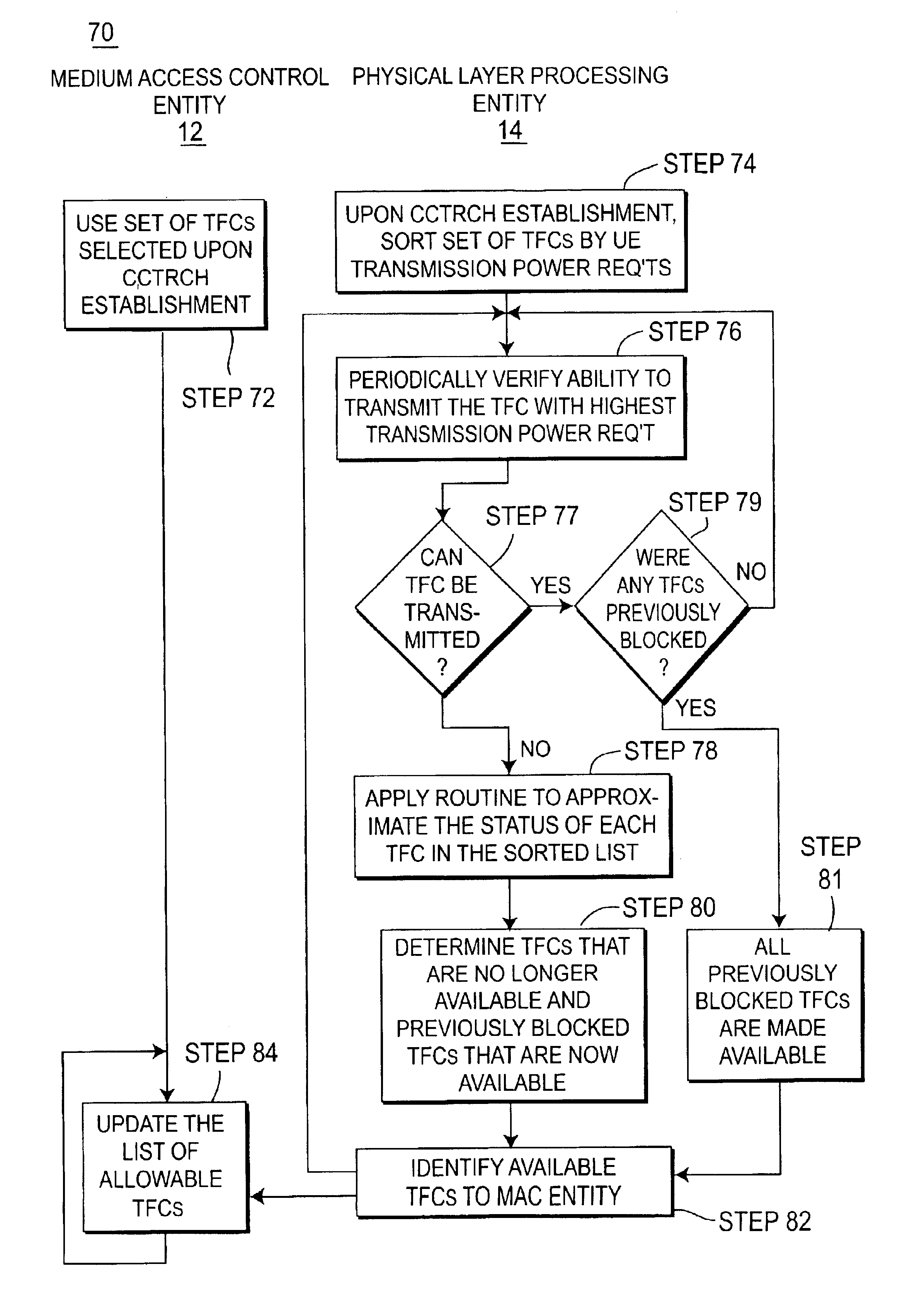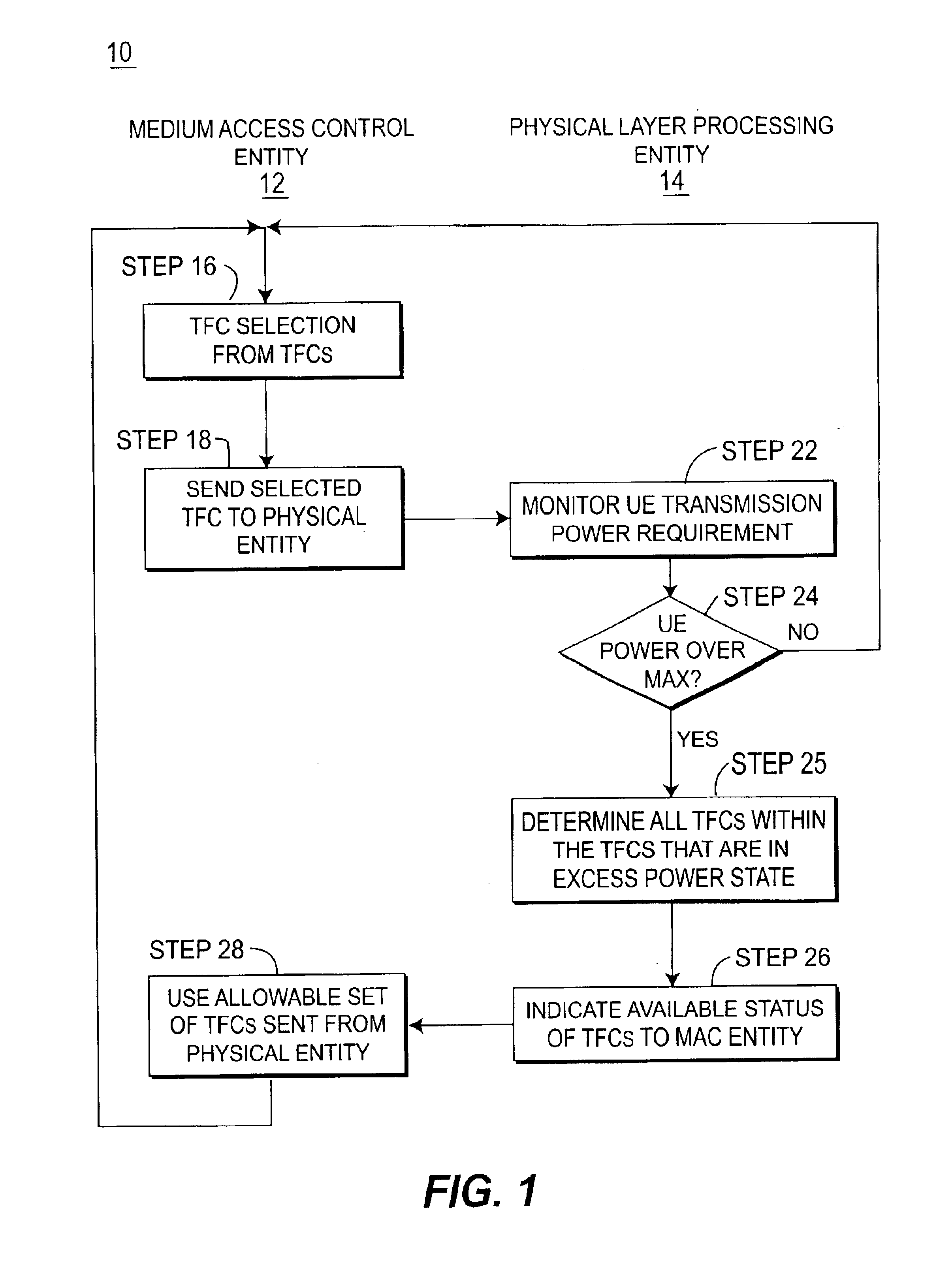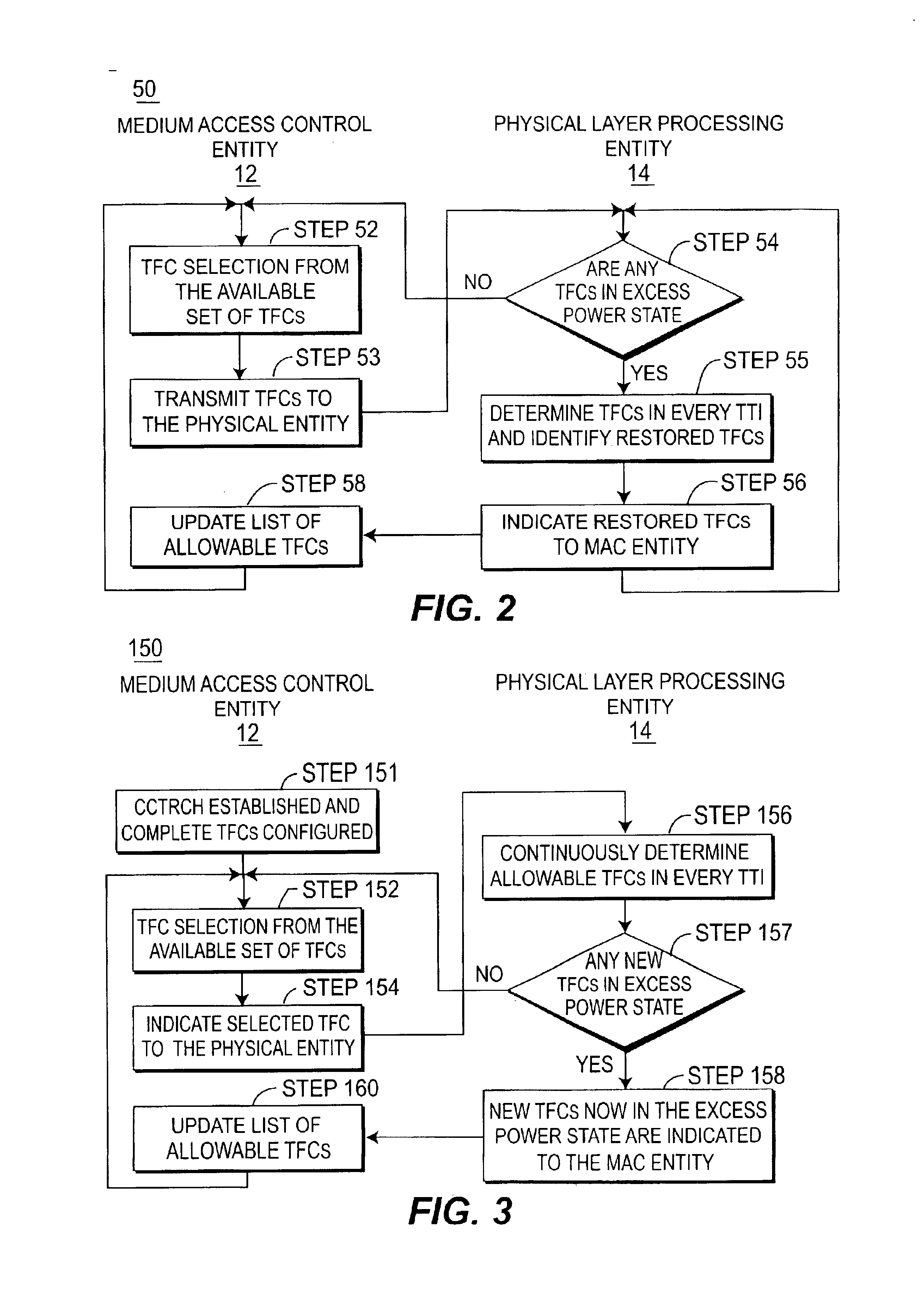System and method for fast dynamic link adaptation
a dynamic link and adaption technology, applied in power management, multiplex communication, high-level techniques, etc., can solve the problems of increasing the probability of transmitting data not being received, reducing the efficiency of tfcs, and increasing the error rate. achieve the effect of efficient reduction of tfcs
- Summary
- Abstract
- Description
- Claims
- Application Information
AI Technical Summary
Benefits of technology
Problems solved by technology
Method used
Image
Examples
Embodiment Construction
)
The present invention will be described with reference to the drawing figures wherein like numerals represent like elements throughout.
There are three basic aspects to dynamic link adaption in accordance with the present invention. First, when a condition exists where the UE transmission power requirement exceeds the maximum, or maximum allowed, power of the UE, the TFCs that require power in excess of the maximum power limit are efficiently blocked. The MAC is informed, for subsequent TFC selection, of all TFCs that currently exceed this limit. Thereafter, only TFCs that do not require power in excess of the UE transmission power limit capability are available for selection.
Secondly, the present invention supports efficient recovery of TFCs in the TFCS when the maximum power condition no longer exists.
Finally, the invention supports advance determination of non-supported TFCs; i.e. those TFCs that require transmission power greater then the maximum or allowed UE transmission. Thes...
PUM
 Login to View More
Login to View More Abstract
Description
Claims
Application Information
 Login to View More
Login to View More - R&D
- Intellectual Property
- Life Sciences
- Materials
- Tech Scout
- Unparalleled Data Quality
- Higher Quality Content
- 60% Fewer Hallucinations
Browse by: Latest US Patents, China's latest patents, Technical Efficacy Thesaurus, Application Domain, Technology Topic, Popular Technical Reports.
© 2025 PatSnap. All rights reserved.Legal|Privacy policy|Modern Slavery Act Transparency Statement|Sitemap|About US| Contact US: help@patsnap.com



